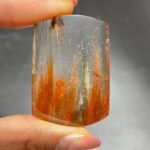Fluorescence and Phosphorescence: Unveiling Invisible Patterns
UV reactive materials possess the remarkable ability to absorb ultraviolet light and emit visible light in return. This phenomenon, known as fluorescence and phosphorescence, allows these materials to glow with vibrant colors under UV illumination, revealing intricate patterns and hidden secrets. Fluorescence occurs when the material absorbs UV light and immediately emits visible light upon de-excitation. Phosphorescence, on the other hand, involves the temporary storage of energy by the material, resulting in a sustained glow that persists even after UV light is removed.

Applications: From Art to Security
The unique properties of UV reactive materials have led to their widespread use across diverse industries. In the art world, they add an interactive and captivating element to paintings, sculptures, and installations. By incorporating UV reactive pigments into their artworks, artists can create hidden messages, secret paintings, and other sensory experiences that engage viewers on multiple levels.
In the field of security, UV reactive inks are employed in banknotes, passports, and ID cards to deter counterfeiting. The invisible markings and patterns created with these inks can only be revealed under UV light, making it easier to verify the authenticity of documents. Additionally, UV reactive materials are used in safety markings, glow-in-the-dark toys, and other products that require visibility in low-light conditions.
Innovative Applications: Exploring the Luminescent Frontier
Beyond these traditional applications, UV reactive materials continue to inspire innovative solutions in various fields. For instance, researchers are developing UV reactive coatings for medical devices to enhance surgical precision by highlighting anatomical structures. The automotive industry explores using UV reactive paints to create unique lighting effects and improve driver visibility.
Customer Needs and Desires: Unveiling the Luminescent Landscape
Consumers today seek products that offer more than mere functionality. They desire experiences that engage their senses and evoke wonder. UV reactive materials fulfill this need by adding an element of interactivity and hidden beauty to everyday objects. From luminescent home decor to interactive gaming experiences, UV reactive materials cater to the desire for personalized and immersive environments.
Tips and Tricks: Harnessing the Power of UV Luminosity
To effectively utilize UV reactive materials, consider the following tips:
- Choose the right wavelength: Different materials react to specific UV wavelengths. Determine the optimal wavelength for the desired application.
- Optimize lighting: Use specialized UV lamps or flashlights to maximize the glow effect.
- Consider the environment: UV light can cause damage to some materials. Test and protect materials before exposure to prolonged UV illumination.
Common Mistakes to Avoid: Enlighting Pitfalls in Luminescence
Avoid these common pitfalls to ensure successful use of UV reactive materials:
- Overexposure: Prolonged exposure to UV light can degrade materials. Limit exposure to recommended levels.
- Direct eye exposure: UV light can damage the eyes. Always wear protective eyewear when working with UV lamps.
- Ineffective materials: Not all materials are UV reactive. Verify the UV reactivity of materials before use.
Tables: Illuminating Data on UV Reactivity
Table 1: Applications of UV Reactive Materials
| Industry | Application |
|---|---|
| Art | Hidden messages, secret paintings |
| Security | Banknotes, passports, ID cards |
| Safety | Safety markings, glow-in-the-dark toys |
| Automotive | Lighting effects, improved driver visibility |
Table 2: UV Reactivity of Common Materials
| Material | UV Reactivity |
|---|---|
| White paper | Non-reactive |
| Fluorescent paint | Highly reactive |
| Polyester fabric | Moderately reactive |
| Glass | Non-reactive |
Table 3: Wavelengths for Optimal UV Reactivity
| Material | Optimal Wavelength (nm) |
|---|---|
| Fluorescent paint | 365-380 |
| Phosphorescent paint | 400-420 |
| Glow-in-the-dark toys | 450-460 |
Table 4: UV Exposure Recommendations
| Material | Maximum Exposure Time |
|---|---|
| Plastics | 10 hours |
| Fabric | 24 hours |
| Paper | 1 hour |
Conclusion: Radiating Innovation with UV Reactivity
UV reactive materials have emerged as a versatile and captivating tool, transforming diverse industries with their ability to reveal hidden worlds. As research and innovation continue to unlock new applications, the luminescent frontier promises to illuminate our understanding of the visible and invisible. By embracing the power of UV reactivity, we can create products and experiences that inspire wonder, enhance safety, and push the boundaries of human ingenuity.




























